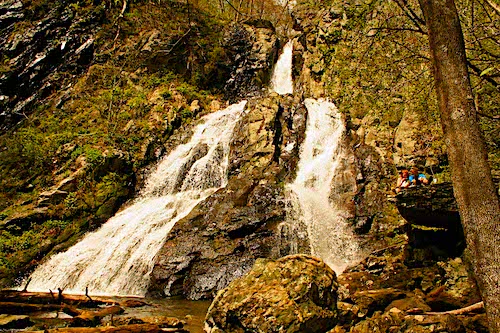
This is a monthly column from the Old Rag Master Naturalist chapter that will share things happening in nature each month. It will share places you can go to experience nature, wildlife, plants, insects and more.
By Charlene Uhl, Old Rag Master Naturalist Chapter
Residents across the region are so close to Shenandoah National Park that almost anyone can drive into the park within 30 minutes of their home. And there is so much to see and do — you’ll have to visit our local treasure a lot!
Did you know:
- Skyline Drive traverses the park along the crest of the Blue Ridge Mountains, with four automobile entrances along its 105 miles: Front Royal (Rte. 340), Thornton Gap (Rte. 211), Swift Run Gap (Rte. 33) and Rockfish Gap (Rte. 250/I-64).
- Over 70 scenic outlooks highlight views.
- Mile markers guide you to trail heads, visitor centers, restroom facilities, campgrounds and other amenities.
- The park includes:
- 197,439 acres or 311.09 square miles
- A total of 79,579 acres designated as wilderness under the Wilderness Act of 1964
- 516 miles of hiking trails, including 101 miles of the Appalachian Trail which is a National Historic Trail
- Two visitor centers: Dickey Ridge (milepost 5) and Byrd (mile post 51)
- Five campgrounds and seven picnic areas
- Three lodging facilities run by Delaware North (the Park concessionaire): Skyland (milepost 41), Big Meadows (milepost 51) and Lewis Mountain Cabins (milepost 61); also offered are five food outlets and one gas station
- Pets are allowed on designated trails [on a leash, of course!]
- The Park is 95% forested and contains 1,406 species of vascular plants, including 132 species of trees and 862 species of wildflowers.
- Wildlife includes:
- More than 200 species of birds, including wild turkey and ravens
- 53 species of mammals, including bobcats, red fox, beaver, white-tailed deer, and black bears
- 38 species of fish
- 18 species of snakes, including the venomous copperhead and timber rattle snake
- There are 10 absolutely wonderful waterfall hikes
- Tallest: South River at milepost 62.8, a 2.6-mile hike from the parking area. It falls 83 feet which is over 7 ½ stories high
- All involve a downhill hike (and, of course, uphill to get back to your car!)
- Roughly 80% of people in North America cannot see the Milky Way due to electric lights at night. But you can at Big Meadows! On moonless and cloud-free nights, you can see the Milky Way and some of the 2,500 stars visible to the unaided eye that make up one of the 88 official constellations.
Little-known facts about the Park (from an insider who knows):
- The Park was authorized on May 22, 1926, established on December 26, 1935 and dedicated on July 3, 1936.
- African American visitors to the park experienced segregation until 1950.
- The Park contains the first Presidential retreat at Rapidan Camp, which served as President Hoover’s fishing retreat.
- The Park has three official partners:
- The Shenandoah National Park Association which runs the Park’s two bookstores and supports its educational and interpretive programs
- The Shenandoah National Park Trust which is the Park’s official fundraiser
- The Potomac Appalachian Trail club which works with the Park on keeping all of its trails open for hikers
Before you go
Weather can cause the park to be closed, especially in winter. Call 540-999-3500 (option 1, option 1) for the most up-to-date road status.
Check out the Park’s website for lots more information on hikes, camping, downloadable books for kids, and more.
Cell service and Wi-Fi are very limited in the park. Be sure to download the SNP app (free for both iPhone and android) before leaving home.
Want to get more ideas on learning about nature? Have questions? Want to receive our newsletter? Go to the Old Rag Master Naturalist website. Information, activities and books of special interest to parents and teachers is at ORMN’s Resources for Parents and Teachers.
Master Naturalists Bonnie Beers and Jack Price contributed to this article.
Photo courtesy of Jack Price.
•••
RELATED ARTICLES
Nature Notebook: Climate Report – One for the Ice Ages
Over 900 acres protected in Page County through DuPont settlement
Nature Notebook: Climate Report – A Look at 2020 Data
Shenandoah National Park presents 2021 Fee-Free Days
Projects funded by Shenandoah National Park Trust announced for 2021



Be the first to comment